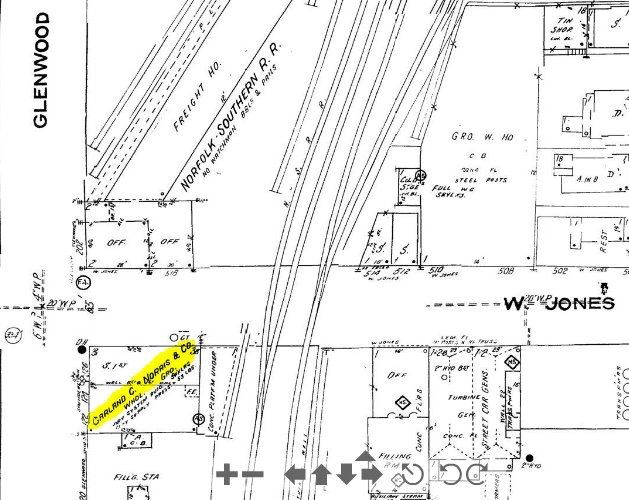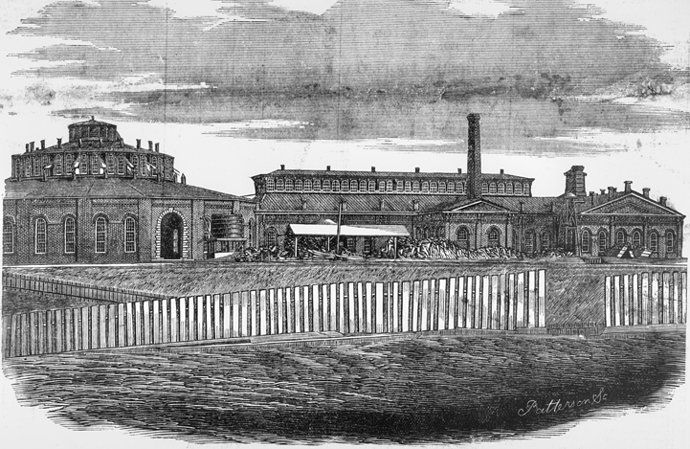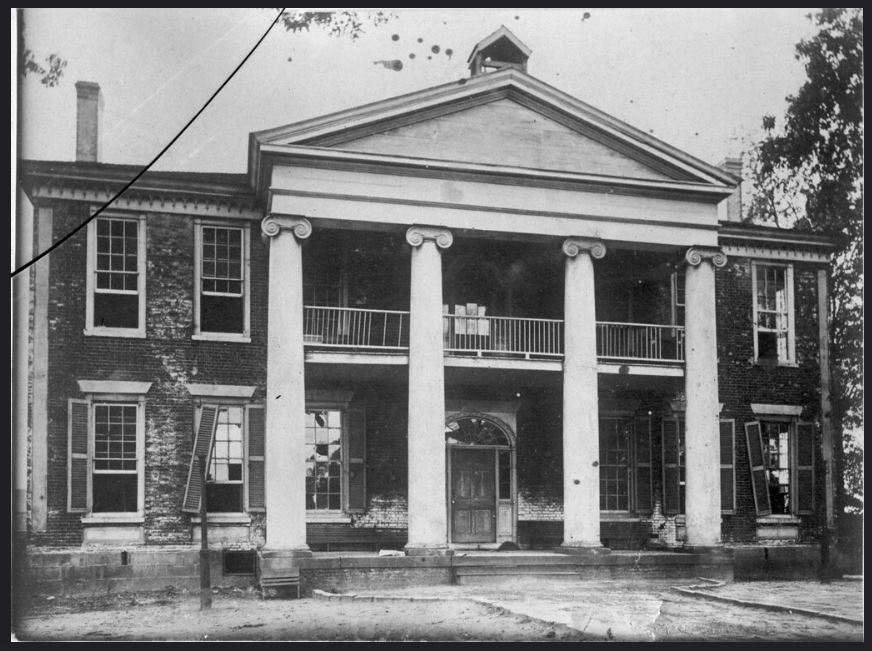General Ulysses S. Grant came to Raleigh on April 23, 1865 after President Lincoln’s funeral to inform General William T. Sherman that the original terms of surrender initially hammered out at Bennett’s Place farm in Durham had to be revised.
As General Joseph E. Johnston had earlier lead the retreat of the 21,000 member Army of the South to Greensboro, he ordered the burning of Raleigh’s original Union Depot and surrounding storehouses containing large supplies of shoes and blankets at Cabarrus Street. This occurred prior to Sherman’s arrival coming up the road from Clayton on April 13th.
So, General Grant could have arrived on the Raleigh & Gaston Railroad from Petersburg by way of Weldon. (Using the Wilmington & Weldon Railroad to Goldsboro, and coming to Raleigh by way of the North Carolina Rail Road would likely have been difficult as Sherman had already directed the Goldsboro station to be burned after the Battle of Bentonville as part of the larger Campaign of the Carolinas.)
With the Union Depot in ruins, it’s difficult to say which of the Raleigh & Gaston structures (situated up the hill and across the tracks from Zimmer’s proposed tower) would have received his detail.
But, the freight operations at the corner of Jones and Salisbury Streets, where the present General Assembly Building stands, would have been the most likely arrival point.
That being said, General Sherman had established his headquarters in the Governor’s Palace after receiving the surrender of Raleigh from then-mayor William H Harrison. (Governor Zebulon Baird Vance had already left Raleigh after securing what state records he could. He was in Hillsborough and later Charlotte to meet with Jefferson Davis, but declined to join him on his escape from Richmond; thus returning on his own back to Greensboro.) It was there that Grant and Sherman conducted their meetings without Johnston’s knowledge of Grant’s arrival.
After securing the city and confiscating all available weapons (sparing it the fate which befell Columbia SC), the bulk of the almost 60,000 Union troops set up garrison on Dix Hill. There was the foraging for supplies around the city with some damage incurred (including the theft of North Carolina’s copy of The Bill of Rights which was eventually returned in 2005.) One member of General Joseph Wheeler’s 11th Texas Cavalry by the name of Lieutenant Robert Walsh, staying behind from Johnston’s retreat, fired on members of Sherman’s troops near the Market House on Fayetteville Street. He was eventually captured and hanged on April 13th, and he is now buried at Oakwood Cemetery.
Meanwhile, General Sherman was taking the train back and forth to Durham’s Station and going on to Bennett’s Place by horseback. Once Grant was satisfied that the proper terms of surrender were in place, he left Raleigh for Washington (by way of Goldsboro) on April 27th letting Sherman finish the negotiations with Johnston. Sherman and his army departed Raleigh on April 29th for Richmond, and then on to Washington for their Grand Review on May 24th.
Thereafter, the state declared the mansion “unfit” to serve North Carolina’s governors. From 1865 until 1891, the state’s chief executive was responsible for securing his own accommodations while in Raleigh. Most governors rented private homes or stayed at the Yarborough House hotel on Fayetteville Street. Construction of the present Governor’s Mansion occurred from 1883 to 1891.
The city acquired the abandoned property in 1876 and re-purposed it as the Centennial School. The aging structure was demolished in 1883 and replaced by a building more suitable for use as a public school. That building itself was demolished and replaced by the Raleigh Memorial Auditorium in 1930, now home to the Duke Energy Center for the Performing Arts.
Yes @Mark , there is such a marker.









